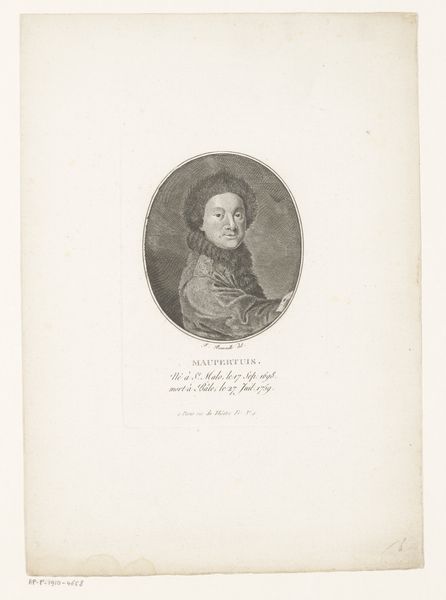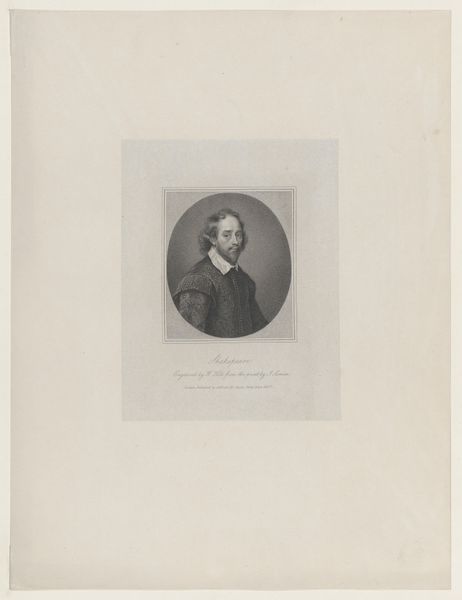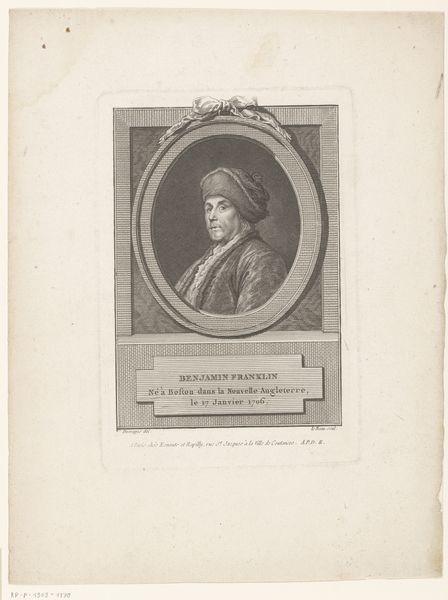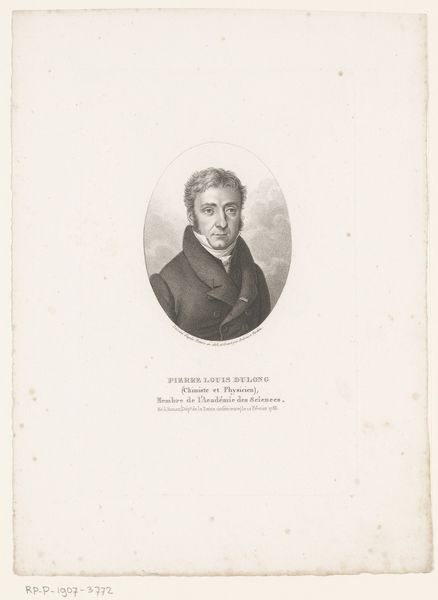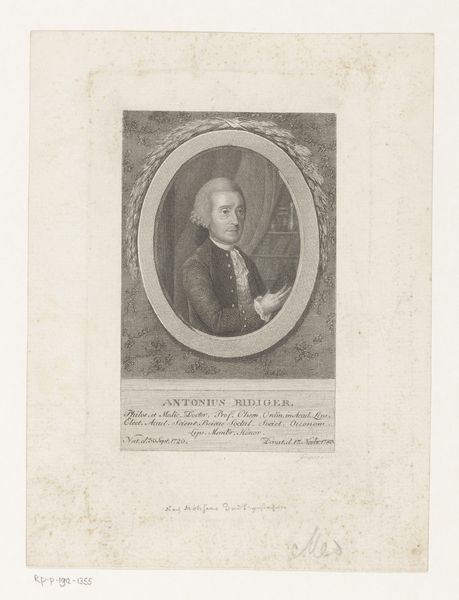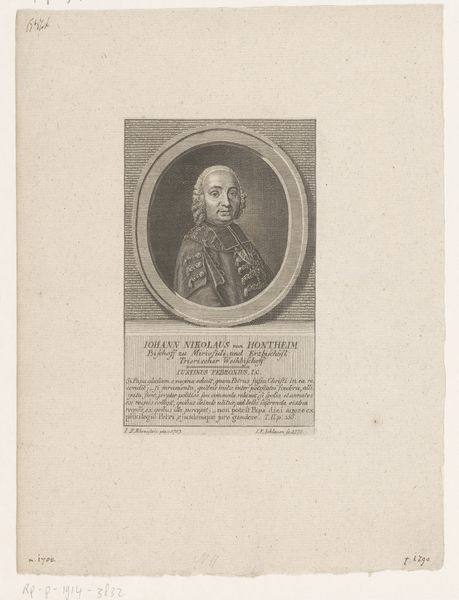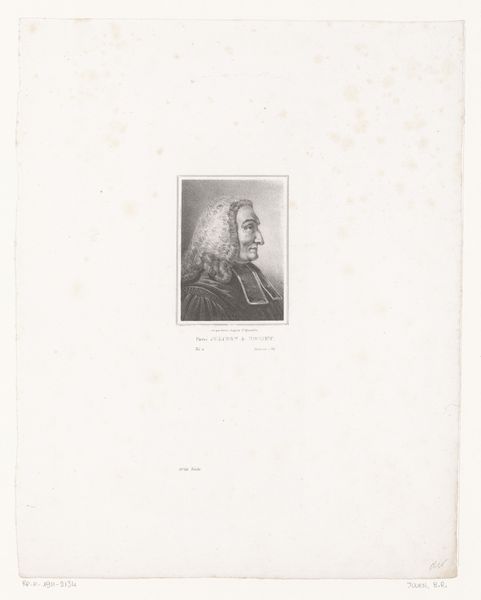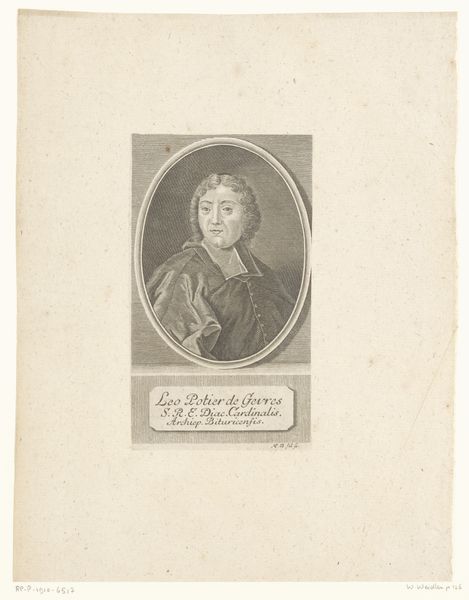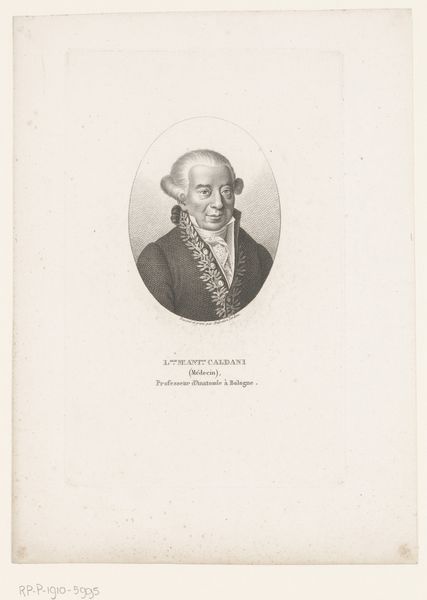
print, engraving
#
portrait
#
neoclacissism
#
ink paper printed
# print
#
old engraving style
#
personal sketchbook
#
academic-art
#
engraving
Dimensions: height 156 mm, width 109 mm
Copyright: Rijks Museum: Open Domain
Editor: Here we have François Bonneville's "Portrait of Clemens XIV," an engraving from somewhere between 1796 and 1802. It's a rather stark image, a monochrome study of a man framed in a circle. What compositional elements strike you the most? Curator: The severe geometry is compelling. The circle in the rectangular field, the rigid lines of the sitter’s garments against the soft modeling of the face. The hatching used to define the volumes is meticulously controlled, creating a tonal range that’s subtle yet highly effective. Observe how the density of the lines shapes our perception, drawing us towards the face, particularly the eyes. Do you notice how the eyes invite you in? Editor: I do. They seem quite lively for an engraving. There's an unexpected depth created by the shading around them. Is that characteristic of neoclassical portraiture? Curator: The neoclassicists were particularly interested in the rational ordering of space. Observe the balance of light and shadow, how it creates a sense of order. In particular, the lack of emotional display, the controlled lines, these elements signal a turn away from the exuberance of the Baroque, toward a more "objective" mode of representation. Consider this "objectivity" not as neutrality but as its own kind of rhetoric. Is it succeeding? Editor: It certainly seems successful as rhetoric. The engraving projects an air of authority. It’s more about conveying the office than the personality of the individual. The choice to constrain him within that circle further reinforces that sense of containment and formality. Curator: Precisely. These formal elements articulate specific values. Through attention to structure and form, we decode how this image functions ideologically. It serves less as a window onto a person, and more as a monument. Editor: So, even without knowing anything about Clemens XIV, we can begin to understand what Bonneville and his contemporaries wanted to convey through this medium and style. Thanks for walking me through that! Curator: A pleasure. By examining these formal structures, we reveal their intricate web of meaning and ideological commitment.
Comments
No comments
Be the first to comment and join the conversation on the ultimate creative platform.

